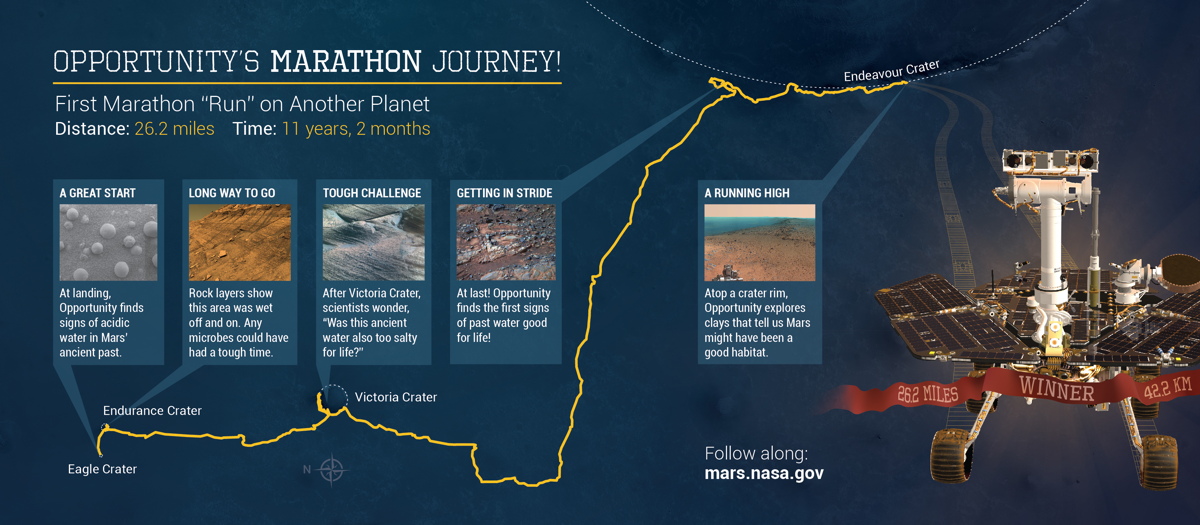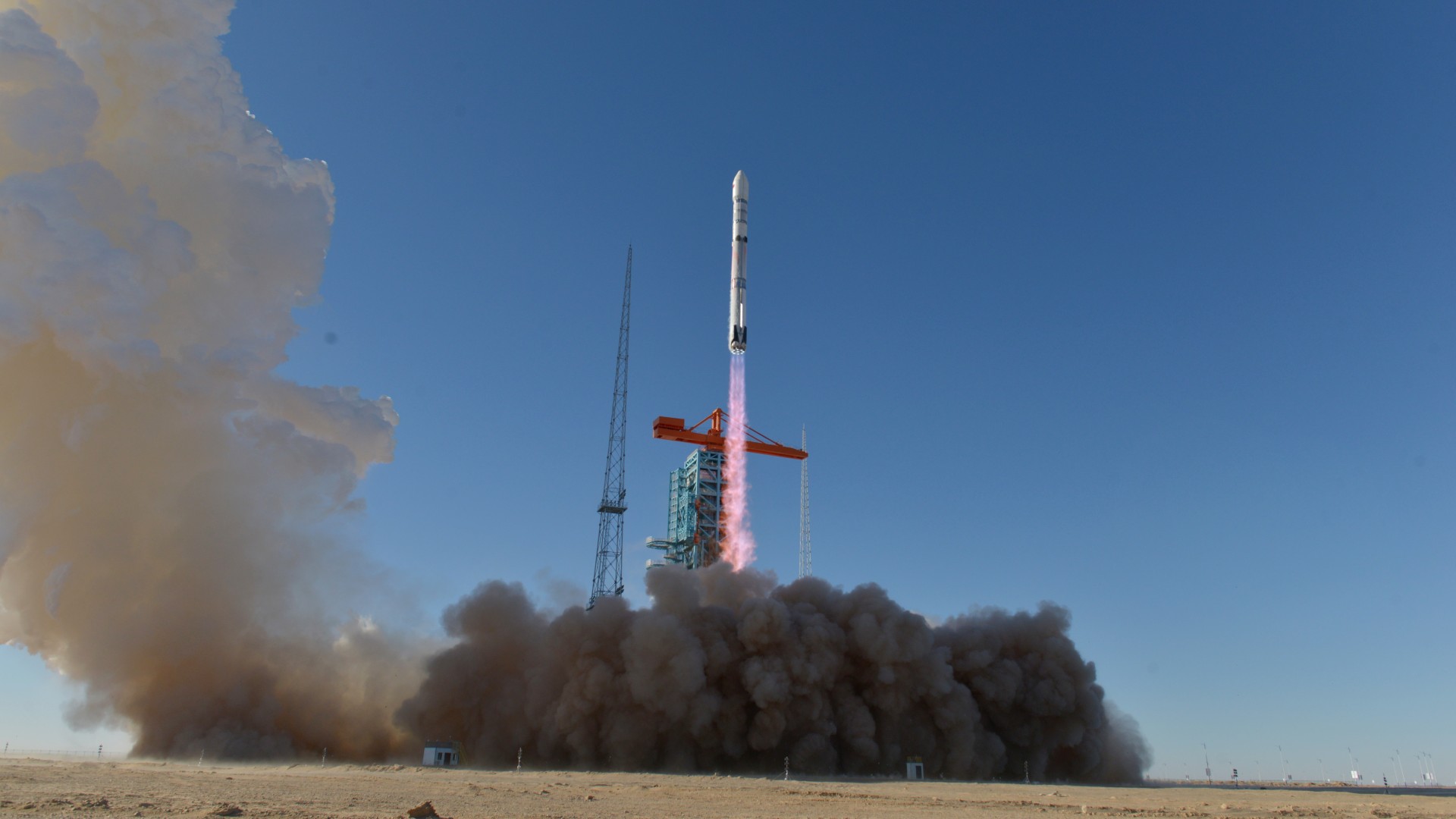
NASA Moon Orbiter, Mars Rover Face Budget Chopping Block

THE WOODLANDS, Texas — Despite a forward-looking and overall healthy NASA planetary science program budget, two on-duty spacecraft are now on the chopping block.
The government's current budget proposal for NASA just isn't enough to cover everything, said James Green, head of NASA's Planetary Science Division. Green noted that the Lunar Reconnaissance Orbiter and the veteran Red Planet robot, the Opportunity rover, are now zeroed out in President Obama's NASA budget for fiscal year 2016.
During "NASA Night" on March 16, here at the 46th Lunar and Planetary Science Conference, Green said that this is "tough news," and an analysis of the situation at NASA will come this summer. The hopes are to find money to maintain the missions. [See photos taken by Opportunity on Mars]
"So stay tuned on that," Green told the space scientists, but said that programmatic decisions "are tough."
High value … few dollars
Launched on June 18, 2009, NASA's Lunar Reconnaissance Orbiter (LRO) continues to collect an impressive amount of data, adding new knowledge about the moon.
"Continuing the LRO mission is truly 'high value for few dollars' science," said Paul Spudis, a space scientist at the Lunar and Planetary Institute in Houston.
LRO is in a stable orbit circling the moon, Spudis said, and continues to obtain outstanding, high-resolution images of the lunar surface, shedding light on the moon's history and processes.
Breaking space news, the latest updates on rocket launches, skywatching events and more!
Scientific sense
"If we can continue to operate LRO for the next few years, we may eventually obtain a global high-resolution map of the entire moon," Spudis said. This data set will be used for decades to come and will allow the identification of new sites for exploration, utilization and, eventually, habitation, he said.
Spudis also points to another facet of LRO's duties – an ability that was previously shut down due to a money shortfall.
"I believe that we should take additional bistatic radar data," Spudis said, making use of radar pulses blasted to the moon via the Arecibo radio telescope in Puerto Rico with echoes picked up on the Miniature Radio-Frequency instrument (Mini-RF). It is a synthetic aperture radar instrument mounted on LRO.
Doing so, Spudis said, would "uniquely indicate the locations and amounts of polar ice" on the moon. He is a team member on the Mini-RF experiment.
The Mini-RF radar is currently shut by lack of funding, Spudis said, "but it could be started up again to conduct bistatic measurements. This is an entirely new mission for lunar polar volatiles, as we have collected only demonstration amounts of bistatic radar to date," he added.
"Using LRO for as long as possible makes economic, operational and scientific sense. It's a lot of bang for the buck," Spudis said.
Science potential per dollar
At distant Mars, also eyed for shutdown is Opportunity, the venerable Mars Exploration Rover (MER). The robot has been wheeling about on the Red Planet for more than 11 years now, following a January 2004 landing in Eagle Crater.
"I'm convinced that continued funding of Opportunity is warranted, and I'm not alone," said Steve Squyres, Opportunity principal investigator at Cornell University in Ithaca, New York.
The Jet Propulsion Laboratory manages the Mars rover projects for NASA's Science Mission Directorate in Washington, D.C. [Boldest Mars Missions of All Time]
Recently, NASA conducted a "senior review" of all of its ongoing planetary missions, Squyres told Space.com via email. This was a comprehensive evaluation of future science potential per dollar, involving written proposals submitted by the project teams, and rigorous outside peer review.
Opportunity came out tied for first place — with NASA's Mars Reconnaissance Orbiter — among all ongoing Mars missions, Squyres said.
"The rover is in excellent health, and is poised now just outside Marathon Valley, where orbital data indicate significant concentrations of clay minerals that could provide evidence for past habitable environments. The prospects for important discoveries there and beyond are good," Squyres said.
For these reasons, Squyres said that he hopes and expects that NASA will find the funds necessary to keep Opportunity's wheels on a roll to do science on Mars.
Implications for habitability
Closing down the Opportunity rover mission in fiscal year 2016 would preclude further exploration of the rim of the ancient Endeavour impact crater, said Ray Arvidson, MER deputy principal investigator at Washington University in St. Louis.
"Over the past year we have found — using Opportunity's ability to roam and make measurements — evidence for diverse rim rocks and structures, and what is likely pervasive alteration by aqueous fluids," Arvidson told Space.com.
Arvidson said that the robot's current position, just to the north of Marathon Valley, on the Cape Tribulation rim segment, is an area where orbiting sensors show an extensive set of outcrops with evidence for smectite clay minerals formed in an aqueous environment.
"Exploring and characterizing these outcrops will provide new and important information on past aqueous conditions and implications for habitability, themes central to NASA's Mars Exploration Program objectives," Arvidson said.
Leonard David has been reporting on the space industry for more than five decades. He is former director of research for the National Commission on Space and is co-author of Buzz Aldrin's 2013 book "Mission to Mars – My Vision for Space Exploration" published by National Geographic with a new updated paperback version to be released this May. Follow us @Spacedotcom, Facebook and Google+. Original article on Space.com.

Leonard David is an award-winning space journalist who has been reporting on space activities for more than 50 years. Currently writing as Space.com's Space Insider Columnist among his other projects, Leonard has authored numerous books on space exploration, Mars missions and more, with his latest being "Moon Rush: The New Space Race" published in 2019 by National Geographic. He also wrote "Mars: Our Future on the Red Planet" released in 2016 by National Geographic. Leonard has served as a correspondent for SpaceNews, Scientific American and Aerospace America for the AIAA. He has received many awards, including the first Ordway Award for Sustained Excellence in Spaceflight History in 2015 at the AAS Wernher von Braun Memorial Symposium. You can find out Leonard's latest project at his website and on Twitter.


